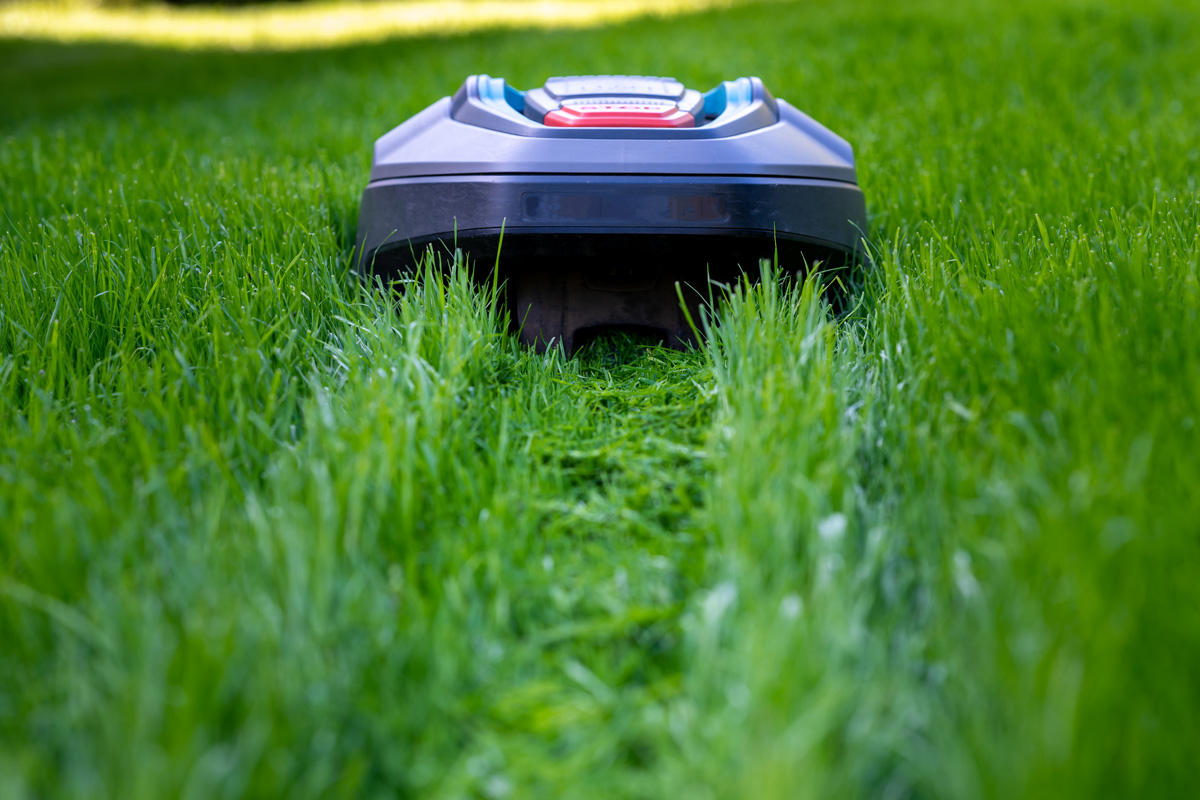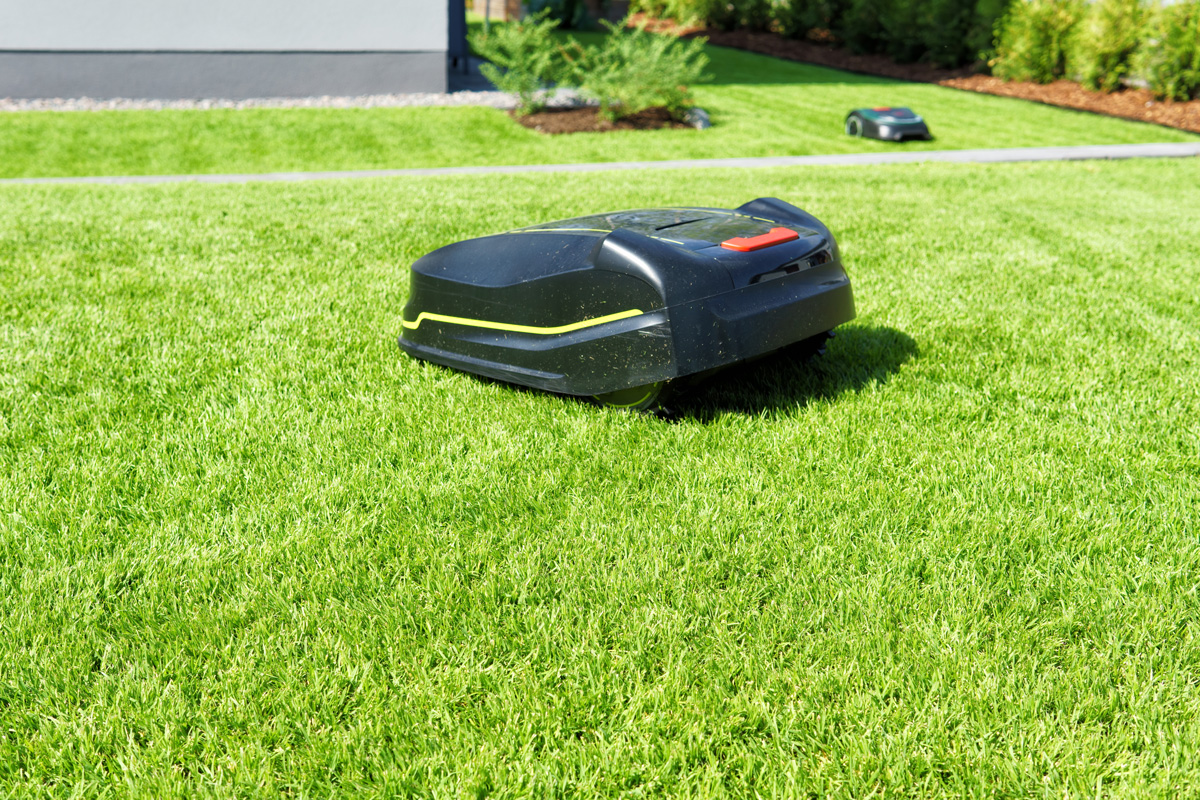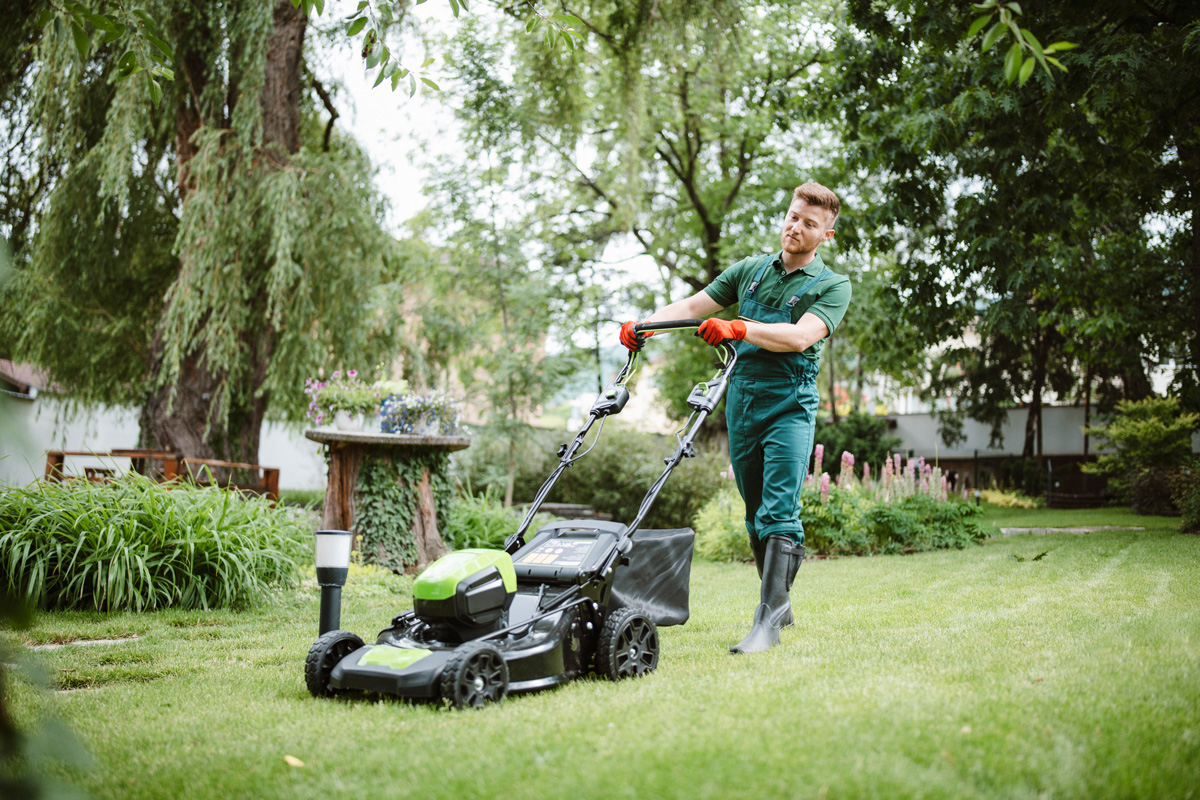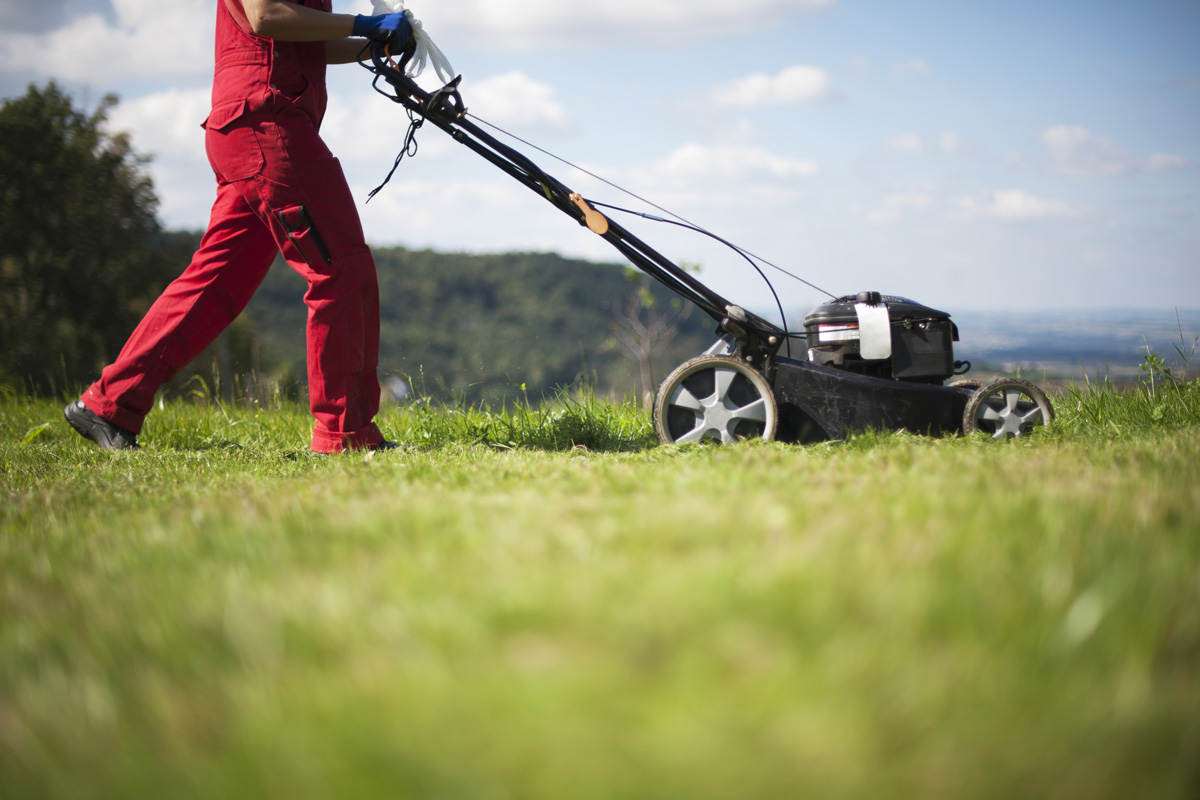Using a self-propelled lawn mower is a convenient way for you to mow your lawn. But sometimes using this type of mower can prove a bit difficult as you always running to keep up with the speed of the lawn mower whenever you turn it on.
We asked technicians about the best way to get your lawn mower to slow down. Here's their response.
To adjust or slow down the speed of a self-propelled mower, you need to do the following:
- Keep the mower on a flat surface
- Keep the lower throttle in the choke
- Pull the starting rope to start the mower
- Move the throttle lever to fast
- Change the speed of the blades
- Push the lever for the drive clutch
We have taken a further step to give you more details on all you need to know about operating this kind of mower. So stay put and keep reading.
![Father doing yardwork around the house on a sunny afternoon using self propelled mower, Self Propelled Lawn Mower Too Fast - [How To Slow It Down]](https://gardentabs.com/wp-content/uploads/2022/07/Self-Propelled-Lawn-Mower-Too-Fast-How-To-Slow-It-Down1-1.jpg)
Self-Propelled Lawn Mower

Self-propelled lawn mowers use a standard drive shaft, like those used in cars to connect the wheels to the motor. When the self-propel option is used, a portion of the mower's engine power is allocated toward rotating the wheels. Although some bigger mowers have four-wheel drive, some systems only operate with two wheels.
Typically, a lever near the mower handle sometimes referred to as the bail bar, is squeezed to engage the drive system. The wheels of many mowers can be turned at various speeds using simple speed changes. When you release the handle, the lever automatically releases, and the action comes to a stop.
Mower models might vary substantially in terms of how effectively these functionalities work and how responsive the controls are. The best self-propelled lawn mowers include an extremely responsive activation lever that enables you to quickly turn the power on and off while maneuvering the mower.
How Fast Do Self-Propelled Mowers Go?
Based on whether it is a one-speed model or not, self-propelled mowers travel at rates of 3 to 3.5 miles per hour. Using a quick, time-saving, self-propelled lawnmower is the way to go if you have a relatively large lawn or very little time for your landscaping work.
How to Adjust The Speed of a Self-Propelled Mower
To utilize a self-propelled mower effectively in your yard effectively, there are several things you ought to be aware of. Learning how to change the mower's speed is one of them. Unfortunately, most owners of self-propelled lawn mowers don't have the technical ability to do this. Below are steps you can take to adjust the speed of a self-propelled mower.
If you know precisely what you are doing, using a lawn mower is not difficult. Adjusting it to the best level of speed is the key to getting the best out of it.
Step 1: Maintain Lawn Mower Atop a Leather face.
Before changing the speed on your lawn mower, set it down on a level area. You can effortlessly regulate your mower this way.
Step 2: Keep Your Mower Throttle lever in the Choke Position while Moving It. is recommended to set the mower's throttle lever to the choke position. Be cautious when pulling the lever if the lawnmower engine is hot. Wait a while for the motor to cool down instead.
Step 3: Pull the Lawnmower's Stretchers
The mower can now be started by pulling the starter cord or by simply turning the ignition key switch.
Step 4: Throttle Lever Movement While Maintaining the Fast Position
Throttle lever movement while maintaining the fast position. When the mower's engine begins to warm up, push the throttle lever and set it to the fast setting. Your mower is now prepared to cut grass.
The mower blade can spin quickly whenever the throttle mechanism is in a fast position. The most grass possible will be efficiently trimmed by you.
Step 5: Change the Mower Blade's Speed
Look just at the side of the mower's handlebar. There is a yellow button there. The blade's speed can be controlled with this yellow button. Start rotating the blade by pressing it in a forward manner. When you press the yellow button facing you, the lawnmower blade will stop spinning.
Step 6: Pull the drive clutch lever
Turn on the mower's drive clutch lever to start moving the mower. To change the lawn mower's speed, the drive clutch must be mowed slowly forward. Your driving clutch determines how the mower moves.
All you have to do to stop the lawnmower is let off of the drive clutch. By doing so, the throttle lever will be moved into a silent position, and the blade will stop whirling. then simpl turn off the mower's engine.
How Do I Increase The Traction on My Self-Propelled Lawn Mower?

To increase the traction on your mower, follow these steps:
- Turn the lawnmower off now before you undertake any adjustments.
- Turn the traction adjustment lever counterclockwise to release it.
- Pull the wire down towards the engine to improve traction.
- Pull the cable upwards toward the handle to reduce traction.
- Turn the traction knob clockwise to tighten it.
- Always adjust the traction cables gradually to feel how it feels.
- The mower may creep forward or become difficult to easily roll rearward if you twist it up too much.
Why Does My Lawn Mower Rev High?
It could be as simple as just an airflow problem causing a lawnmower to search and spike. The engine may slow down if the air it needs to operate is obstructed, especially irregularly. The engine can rapidly rev up as a response to the blockage moving or clearing.
What Causes Over Revving?
Here are the most likely causes of reving in your mower.
Issues With The Spark Plug
A damaged or improperly set spark plug is one issue that might lead to the lawnmower engine revving and dying. Make sure the wire is firmly attached to the spark plug and isn't moving around by inspecting it. Unplug the plug to check for rust and whether it is connected properly.
If so, all it needs is a quick wire brush scrub to get it working again. Change the plug with a newer one if necessary. Using a spark plug gauge, examine the spark plug gap to make sure it is set to the appropriate value in your owner's manual.
Problem With The Carburetor
Poor engine idling which causes hunting and surging is frequently caused by an inadequately set carburetor. Thankfully, the majority of lawnmowers include two screws that let you change the carburetor on your own. While the other changes the idle mixture, one screw regulates the idle speed.
When you're unsure of where the idle control screws are located, see the handbook. Start the lawnmower, and then give it five minutes to run. Once the mower is running and idling smoothly, gradually tighten or loosen each screw.
Issue With Fuel
Old or tainted fuel is a very straightforward remedy that can be the root of many lawnmower idle issues. Drain the fuel and refill it with new fuel if it was left in the lawnmower while it was being stored for the season or while it was not in use.
Check to be sure you haven't accidentally filled the lawnmower with the 2-cycle oil and gasoline used in your gas-powered blowers and trimmers.
How Do You Check RPM on a Lawn Mower?
There are numerous techniques to gauge RPM. Here are two quick methods: -
Purchase a portable optical tachometer. The flywheel should be covered with reflective tape. The tachometer will calculate the quantity of "flashes" per second and give the output of the results. You can also purchase a portable timing light. Connect it to the HT lead and use it.
Do Self-Propelled Mowers Last?
Depending on how frequently it is used, a self-propelled lawnmower should last eight years or longer. Most manufacturers assign a specific amount of service hours to their lawn mowers. The lifespan of a self-propelled lawnmower compared to a traditional push model is not noticeably different.
Many can survive up to 20 years with the right upkeep and care. Similar to push mowers, the majority of manufacturers recommend a lifespan of just ten years.
This applies to most other components and the engine. It will be simpler to locate replacement parts for older lawnmowers if you purchased a popular brand.
Can Self-Propelled Mowers Be Pushed?

A self-propelled lawnmower can be pushed without causing any harm to the gearbox. Since self-propelled lawn mowers tend to be a bit heavier than standard push lawn mowers, it could be challenging to push them.
Self-propelled mowers are designed more sturdily than traditional push mowers. They are made with tougher materials and have more features.
Summary

The speed of self-propelled mowers can be adjusted if it is too fast. With the other additional information provided in this post, we trust you should be able to handle any issues regarding speed that may occur while using your mower.
To learn more about lawn mowers, check out these insightful articles:
